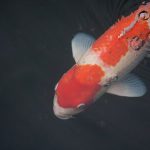1. Understanding the Role of Lighting in an Aquarium
Proper lighting is one of the most important factors in maintaining a healthy aquarium. It affects not only how your tank looks but also the well-being of your fish, plants, and overall ecosystem. Without adequate lighting, your aquatic life may struggle to thrive.
How Lighting Affects Fish
Fish rely on light to regulate their biological rhythms, much like humans do. A consistent day-night cycle helps them maintain a natural behavior pattern, including feeding, resting, and breeding. Without proper lighting, fish can become stressed, leading to health issues over time.
The Importance of Light for Aquatic Plants
If you have live plants in your aquarium, lighting becomes even more critical. Plants use light for photosynthesis, which allows them to grow and produce oxygen for the tank. Insufficient or improper lighting can cause plants to weaken, leading to poor water quality and reduced oxygen levels.
Recommended Light Spectrum for Plants
| Light Type | Best Use |
|---|---|
| Full Spectrum (5000K-7000K) | Ideal for plant growth and natural color enhancement |
| Blue Light (Actinic) | Encourages plant growth and enhances fish coloration |
| Red Light | Promotes flowering and root development in plants |
The Role of Lighting in Ecosystem Balance
Aquarium lighting influences algae growth as well. Too much light can lead to excessive algae buildup, while too little can hinder plant growth. Finding the right balance is key to maintaining a clean and healthy tank environment.
Signs of Improper Lighting
- Fish appearing stressed or inactive
- Poor plant growth or yellowing leaves
- Excessive algae covering tank surfaces
- Water becoming cloudy or unbalanced
By understanding the role of lighting in your aquarium, you can create a stable environment where fish and plants thrive. The next step is choosing the right type of light for your specific setup.
2. Different Types of Aquarium Lighting
Choosing the right lighting for your aquarium is essential for maintaining a healthy environment for your fish and plants. There are several types of lighting options available, each with its own benefits and drawbacks. Below, we’ll explore some of the most common types: LED, fluorescent, and metal halide.
LED Lighting
Benefits
- Energy-efficient and long-lasting
- Produces less heat, reducing the risk of overheating the tank
- Available in various colors and intensities to mimic natural light conditions
- Dimmable and programmable options allow for better control over light cycles
Drawbacks
- Higher initial cost compared to fluorescent lights
- Some low-quality LEDs may not provide adequate spectrum coverage for plant growth
Ideal Use Cases
- Freshwater and saltwater aquariums with live plants or corals
- Aquariums requiring customizable lighting effects
- Tanks where energy efficiency is a priority
Fluorescent Lighting
Benefits
- A more affordable option compared to LED lights
- Easily available in pet stores and online retailers
- Sufficient for many freshwater aquariums with low- to medium-light plants
Drawbacks
- Lifespan is shorter than LED lights, requiring more frequent replacements
- Tends to generate more heat compared to LEDs
- Lacks advanced features like dimming and programmability
Ideal Use Cases
- Beginners looking for a budget-friendly lighting solution
- Tanks with low-light plants or basic fish-only setups
- Aquarists who prefer simple, easy-to-install lighting systems
Metal Halide Lighting
Benefits
- Powers high-intensity light that penetrates deep tanks effectively
- Mimics natural sunlight, making it ideal for reef tanks with corals needing strong lighting
- Covers a broad spectrum of light beneficial for plant and coral growth
Drawbacks
- Consumes more electricity compared to LED or fluorescent lights
- Tends to produce significant heat, which may require additional cooling systems like fans or chillers
- Bulbs need replacement more frequently than LEDs due to gradual loss of intensity over time
Ideal Use Cases
- Larger aquariums with deep water that need strong light penetration
- Saltwater reef tanks housing light-demanding corals and marine life
- Aquariums requiring intense lighting similar to natural sunlight conditions
Comparison Table: Aquarium Lighting Options
| Lighting Type | Main Benefits | Main Drawbacks | Best For |
|---|---|---|---|
| LED Lighting | – Energy efficient – Long lifespan – Customizable settings |
– Higher initial cost – Some models may lack full spectrum coverage |
– Freshwater & saltwater tanks – Planted tanks & reefs |
| Fluorescent Lighting | – Affordable – Easy availability |
– Shorter lifespan – Generates more heat |
– Beginner-friendly setups – Low-light planted aquariums |
| Metal Halide Lighting | – High-intensity light – Ideal for deep tanks & reefs |
– High energy consumption – Produces excess heat |
– Reef tanks with demanding corals – Deep-water aquariums |
Selecting the right type of lighting depends on your specific tank setup and the needs of its inhabitants. Whether you’re maintaining a simple freshwater aquarium or a complex reef system, understanding these lighting options will help you create a thriving aquatic environment.

3. Choosing the Right Lighting for Your Tank
Choosing the right lighting for your aquarium is essential to maintaining a healthy environment for your aquatic life. The type of lighting you need depends on your tank’s inhabitants, whether you have a freshwater or saltwater setup, a planted tank, or a reef aquarium. Let’s explore the best lighting options based on your specific setup.
Freshwater vs. Saltwater Tanks
The lighting requirements for freshwater and saltwater tanks differ significantly. Freshwater tanks often require softer lighting, while saltwater tanks, especially reef aquariums, need more intense illumination to support coral growth.
| Tank Type | Recommended Lighting |
|---|---|
| Freshwater Community Tank | LED or fluorescent lights with moderate brightness |
| Planted Freshwater Tank | Full-spectrum LED lights (5000K – 7000K) to support plant growth |
| Saltwater Fish-Only Tank | LED or T5 fluorescent lights with moderate intensity |
| Reef Aquarium | High-intensity LED or metal halide lights (10,000K – 20,000K) to support corals |
Lighting for Planted Aquariums
If you have a planted aquarium, proper lighting is crucial for photosynthesis and plant health. Full-spectrum LED lights that mimic natural daylight are ideal. Look for lights with a color temperature between 5000K and 7000K to promote plant growth without excessive algae buildup.
Tips for Choosing Planted Tank Lighting:
- Select adjustable LED fixtures to control light intensity.
- Avoid overly strong lighting that can cause algae issues.
- Aim for 8-10 hours of light per day to maintain plant health.
The Best Lighting for Reef Aquariums
Reef tanks require specialized lighting to support coral and other invertebrates that rely on photosynthesis. High-output LED lights or metal halide lamps with a color temperature between 10,000K and 20,000K are commonly used in reef aquariums.
Tips for Reef Tank Lighting:
- Select programmable LED fixtures with adjustable spectrum settings.
- Aim for a mix of blue and white light to enhance coral fluorescence.
- Mimic natural daylight cycles with timers to ensure consistency.
Final Considerations When Choosing Aquarium Lights
No matter what type of tank you have, choosing energy-efficient LED lights can help reduce electricity costs while providing optimal illumination. Also, consider using a timer to automate the light cycle and maintain a stable environment for your fish and plants.
4. How to Maintain and Optimize Aquarium Lighting
Proper maintenance of your aquarium lighting is essential for the health of your aquatic life and the overall appearance of your tank. By following a few simple steps, you can ensure that your lighting setup remains effective and supports a thriving environment.
Replacing Bulbs and LED Maintenance
Over time, aquarium bulbs lose their efficiency, even if they still appear to be working. Regular replacement helps maintain proper light intensity and spectrum.
| Light Type | Recommended Replacement Frequency |
|---|---|
| Fluorescent Bulbs | Every 6-12 months |
| LED Lights | Every 3-5 years (or as needed) |
| Metal Halide Bulbs | Every 9-12 months |
Adjusting Light Schedules for Optimal Growth
The duration and intensity of lighting should be carefully managed to mimic natural conditions. A well-balanced schedule helps prevent algae overgrowth and ensures the well-being of fish and plants.
General Light Duration Guidelines:
- Tropical Fish Tanks: 8-10 hours per day
- Planted Aquariums: 10-12 hours per day
- Saltwater Reef Tanks: 8-12 hours per day with gradual sunrise/sunset simulation
Avoiding Common Lighting Mistakes
Mistakes in aquarium lighting can lead to problems such as algae blooms, stressed fish, or unhealthy plant growth. Here are some common pitfalls to avoid:
Mistakes to Watch Out For:
- Excessive Lighting: Too much light can cause rapid algae growth, making the tank harder to maintain.
- Poor Placement: Placing the tank in direct sunlight can lead to temperature fluctuations and unwanted algae.
- Lack of Consistency: Irregular light schedules can stress fish and disrupt plant growth cycles.
- No Gradual Adjustments: Sudden changes in lighting intensity can shock aquatic life; use dimmers or timers for gradual transitions.
Using Timers and Smart Controls
Aquarium timers and smart lighting systems help automate your light schedule, ensuring consistency without manual adjustments. Investing in programmable LED lights with sunrise/sunset features can provide a more natural environment for your fish.
The Key to a Healthy Aquarium Environment
A well-maintained lighting system is crucial for the success of your aquarium. By replacing bulbs when needed, setting an appropriate schedule, and avoiding common mistakes, you’ll create a stable and healthy ecosystem for your aquatic pets.
5. Common Lighting Mistakes and How to Avoid Them
Proper lighting is crucial for maintaining a healthy and thriving aquarium. However, many aquarium owners make common mistakes that can lead to issues such as excessive algae growth, poor plant health, or stressed fish. Below, we’ll explore some frequent lighting mistakes and provide solutions to help you avoid them.
Algae Overgrowth Due to Excessive Light
One of the most common problems aquarists face is algae overgrowth. This often occurs when the aquarium receives too much light, either from prolonged exposure or overly intense bulbs.
How to Fix It:
- Reduce Light Duration: Limit the lighting period to 8-10 hours per day using a timer.
- Avoid Direct Sunlight: Keep your aquarium away from windows to prevent excessive natural light exposure.
- Use Algae-Control Methods: Introduce algae-eating fish or invertebrates, and perform regular water changes.
Insufficient Illumination
If your aquarium plants are struggling to grow or your fish appear dull, it may be due to inadequate lighting. Insufficient light can stunt plant growth and affect fish coloration.
How to Fix It:
- Select the Right Bulb: Choose an LED or fluorescent bulb with appropriate brightness for your tank size.
- Ensure Proper Coverage: Make sure light reaches all areas of the tank by positioning fixtures correctly.
- Aim for Consistency: Maintain a steady lighting schedule using a programmable timer.
Poor Spectrum Selection
The type of light spectrum used plays a major role in plant growth and fish health. Using the wrong spectrum can result in unhealthy plants and stressed fish.
How to Fix It:
- Select Full-Spectrum Lights: Use bulbs designed for aquariums that provide a balanced spectrum for both plants and fish.
- Avoid High-Intensity Blue Light: Too much blue light can encourage algae growth—opt for a mix of white, red, and blue wavelengths.
- Tailor Lighting to Your Setup: Freshwater tanks with live plants need different lighting compared to saltwater reef tanks, so choose accordingly.
Quick Reference Table: Common Lighting Issues & Solutions
| Mistake | Effect | Solution |
|---|---|---|
| Too Much Light | Algae overgrowth | Reduce duration, avoid direct sunlight, introduce algae eaters |
| Too Little Light | Poor plant growth, dull fish colors | Select appropriate bulbs, ensure full coverage, maintain consistency |
| Poor Spectrum Choice | Unhealthy plants, stressed fish | Select full-spectrum lights, balance wavelengths based on tank needs |
Avoiding these common lighting mistakes will help keep your aquarium balanced and healthy. By selecting the right lighting setup and following best practices, you can create an environment where both plants and fish thrive.

